1lumen selects and reviews products personally. We may earn affiliate commissions through our links, which help support our testing.
Fenix E-Lite review
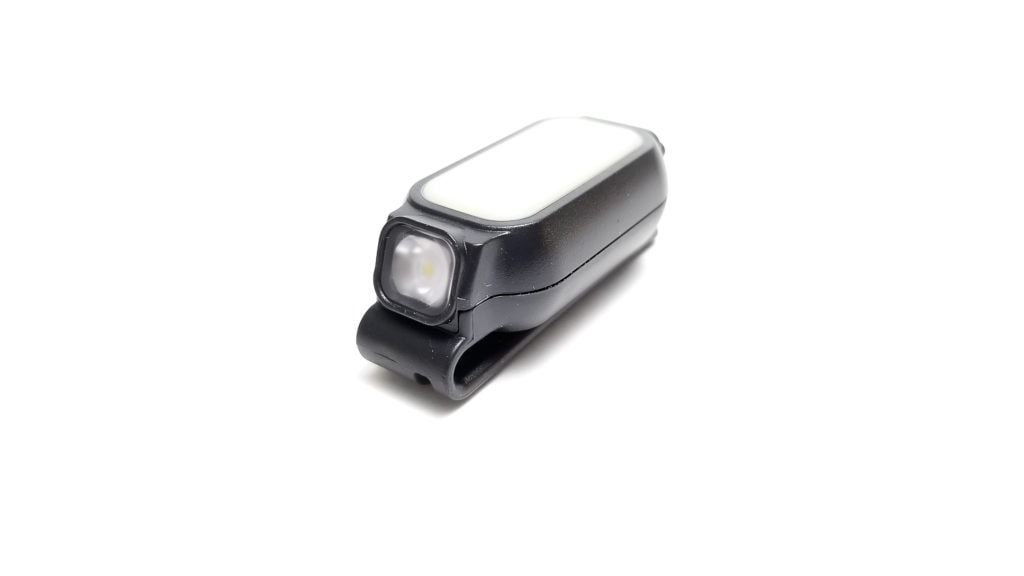
Fenix E-Lite specifications
| Brand/model | Fenix E-Lite |
|---|---|
| LED | Match CA18 White, Everlight 2835 Blue and Red |
| Lumens | 150 lm |
| Beam intensity | 410 cd |
| Battery config. | Built-in Lithium Polymer |
| Material | Plastic |
| Modes | 7 |
| Blinkies | Beacon |
| Reflector | TIR optic |
| Waterproof | IPX8 |
| Review date | May 2021 |
Introduction:
When I was a kid, I remember I was given a cheap (maybe from the dollar store or gas station) flashlight that was about the size of a lipstick tube. It had a single white and blue LED in the front and darned if it was the brightest thing in the world to me. That was about 28 years ago, and now we have flights that are exponentially brighter in smaller packages. Take the Fenix E-Lite. This is the newest addition to the E-series of compact, EDC type lights from Fenix, joining its stablemates the Fenix E03R and E02R. First impressions? It is unique, lightweight, and looks to be very versatile indeed. I’ve been shopping for a lightweight keychain light with about 200 lumens before this showed up, so maybe my searching stops here? Let’s see!
Package quality.
This is a basic keychain-type light and no surprise, it came in a simple retail-friendly package consisting of a cardstock outer packaging with a clear plastic clamshell holding all the bits. Fenix has a continuity model for its small flashlight packaging, and the E-Lite shares the same format. Clear packaging is entirely appropriate here, and we get a good look at the light and all the important specs front and center. Out back, there’s more specs, but not much else. All in all, a very effective package for shoppers. You’ll probably toss the package after opening since you have to cut the paper part open to get the light and accessories out. Once through the paper, the clamshell just folds open. Here’s what’s inside:
- Fenix E-Lite Mini Flashlight
- Keyring
- Short USB A to C charging cable
- User manual
- Warranty card
- Marketing insert
I’m always impressed when flashlight manufacturers don’t skimp or cheap out on accessories, and Fenix gives you absolutely everything needed to get going, which for the buyers of this light is particularly important. The comprehensive manual is pretty squished inside the small package though.
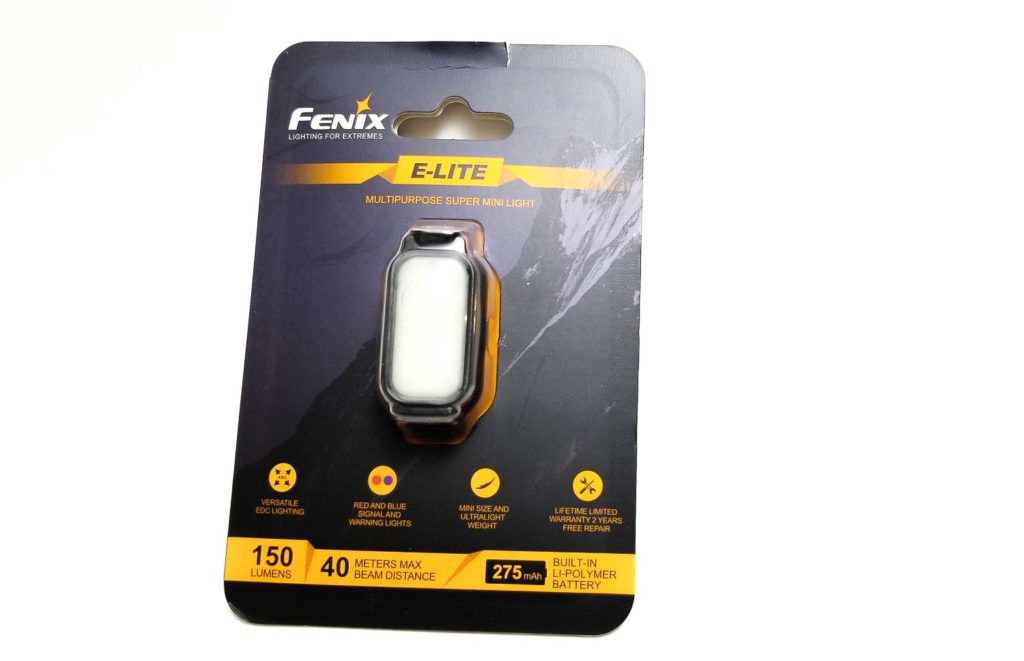
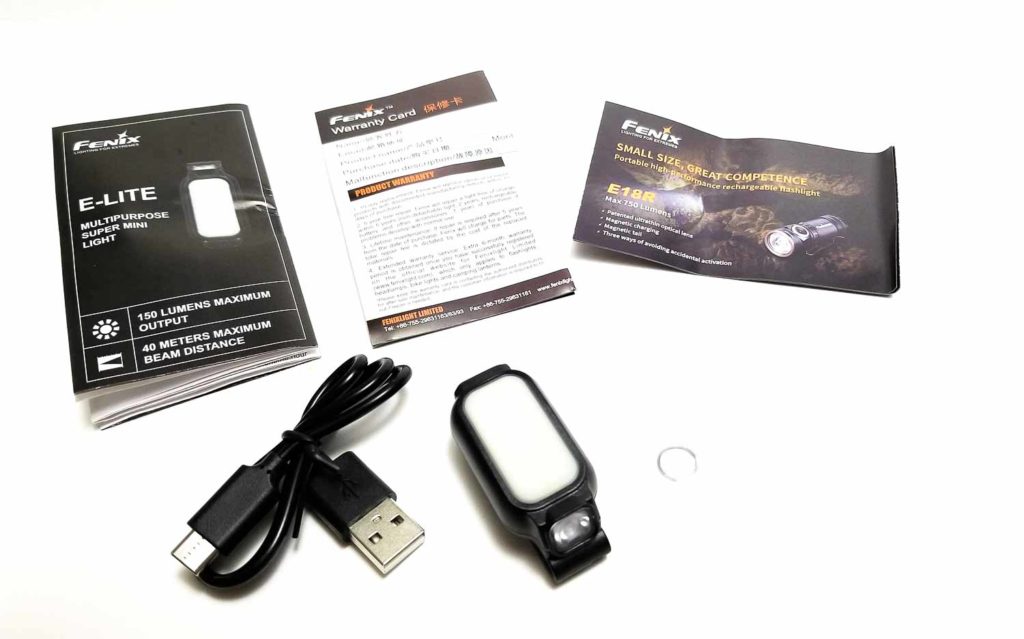
Flashlight in use
The E-Lite is tiny, about the size of a large peanut, and very lightweight. It looks unique and maybe a little bit of an oddball design with the main LED up front, but mounted upwards and off-center. I think people with large hands might find the E-Lite a little awkward, but it’s still easy to use. Fenix markets this as an EDC light, but it’s much more than that. The light can be pocket carried, clipped to objects with the integrated clip, or attached to a keyring with the included ring. I found the mount was in an odd spot situated near the optic, but the E-Lite happily rides on my keyring. I’ve been through several keychain lights that were just too heavy, but the E-Lite is really light.
There’s a single tactile e-switch hiding under an opaque white rubber pad on the top that looks like a diffuser. As such, the button gets hopelessly lost, but thankfully Fenix thought of that and put an indentation with a small protrusion on the cover right over the switch to aid in locating the right spot to press. There’s a green battery indicator light that illuminates for 3 seconds when pressed to help finding it in the dark. I think this could be improved upon a little, and it’s begging for some glow-in-the-dark treatment like the switch boots on some lights.
Click action is about what you expect, a little mushy, but it has a nice audible click and is totally functional. I clipped the E-Lite to a baseball cap bill to use as a headlight and that worked perfectly. You could also clip it to a shirt pocket or backpack to use the red or blue lights as beacons. The red light would come in handy for map reading at night or preserving your night vision. The blue light would be good as a marker or beacon. This would be especially useful for walking or biking at night. The clip provides a good amount of clasping force and I couldn’t shake it off my hat very easily.
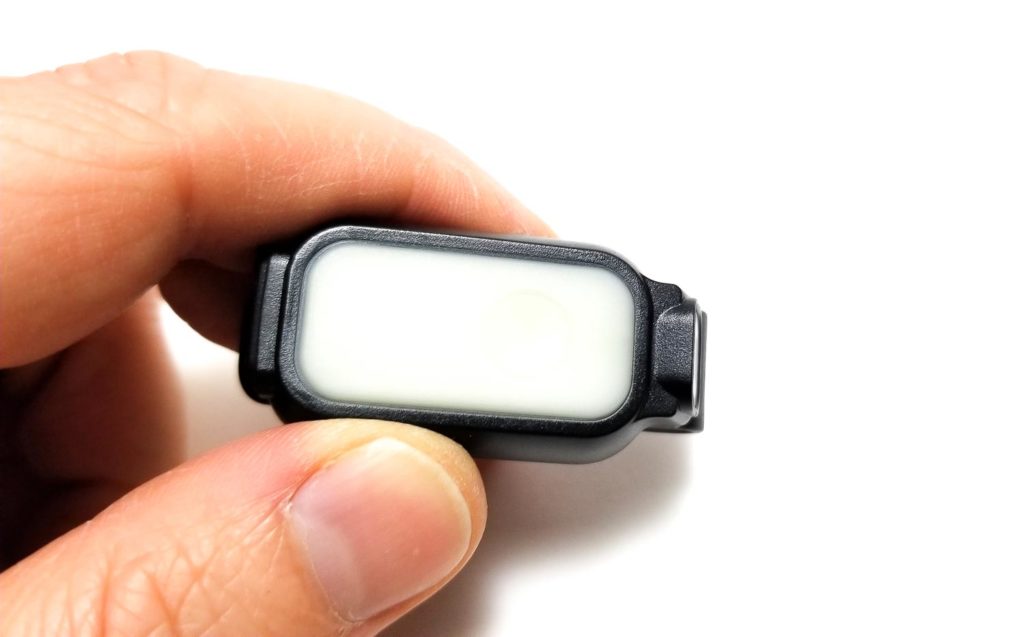
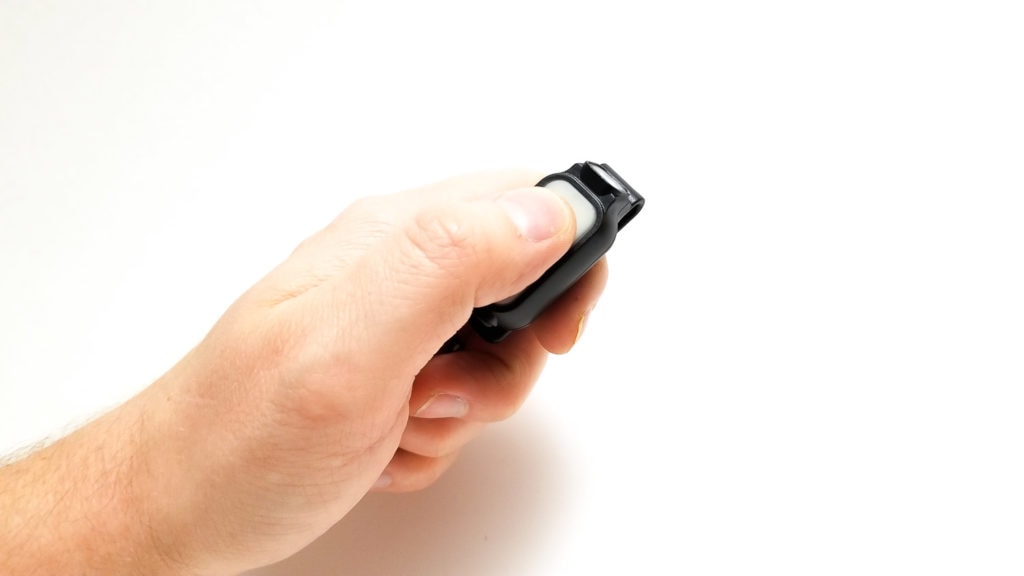
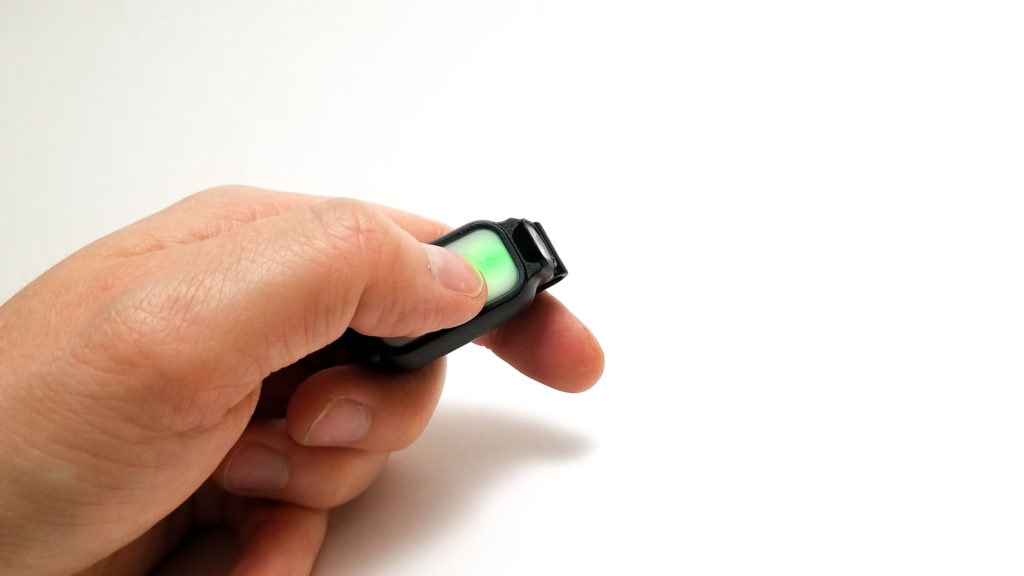
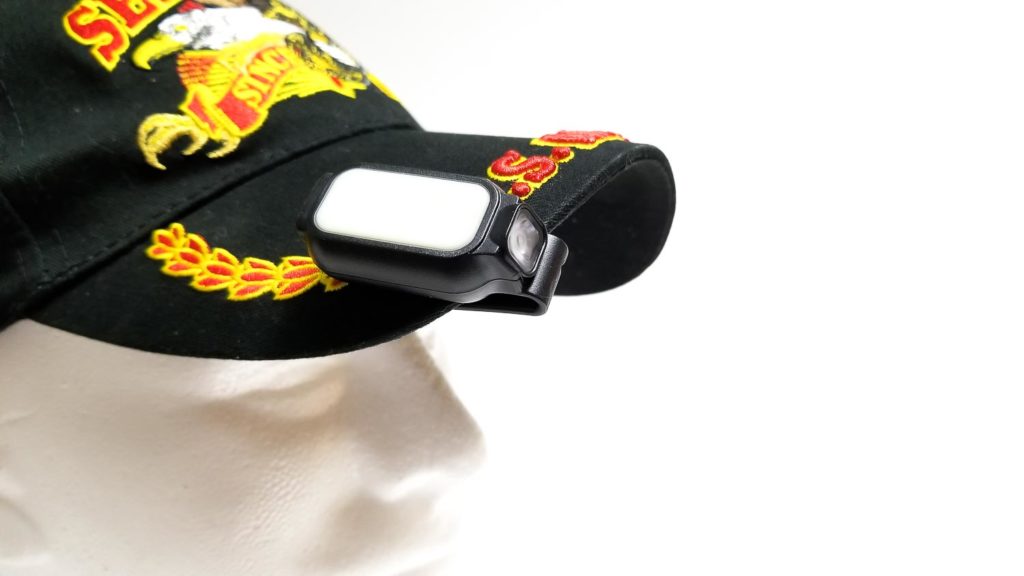
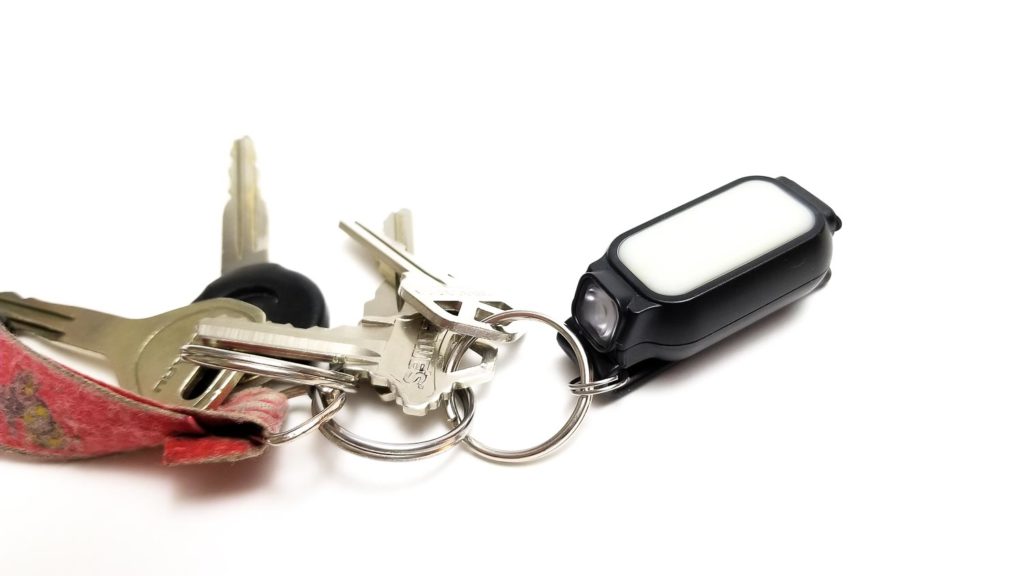
Build Quality, and Warranty
The E-Lite feels nicely put together and well made. It’s made entirely from tough (probably ABS) plastic, and I think it could take a lot of abuse. Short of smashing it with a hammer or attacking it with an axe I don’t think you could break it with bare hands. One thing I appreciate is that the E-Lite is lightweight without feeling cheap and flimsy. The top pad/switch cover looks like very durable rubber also. The USB port cover and clip seems like the weak link here, but I think it is still plenty sturdy.
The casing is either ultrasonically welded or glued together and cannot be taken apart non destructively, which is good for ingress protection (bad for modding). Fenix rates the light at IP66, which basically means it’s impervious to dust and able to withstand a good soaking or rainstorm. I can attest to this since the E-Lite took an unplanned adventure through the laundry and came out working perfectly! Maybe I’ll test more lights this way?
If you’re wondering about the warranty, despite this being a cheap keyring light the warranty is awesome: 15 day free replacement, 5-year limited warranty for manufacturing or quality defects for flashlights, 2 years for non-detachable lights, 1 year for batteries and accessories, and lifetime limited warranty that covers repairs, but not parts. Fenix extends the warranty 6 months if you register the product.
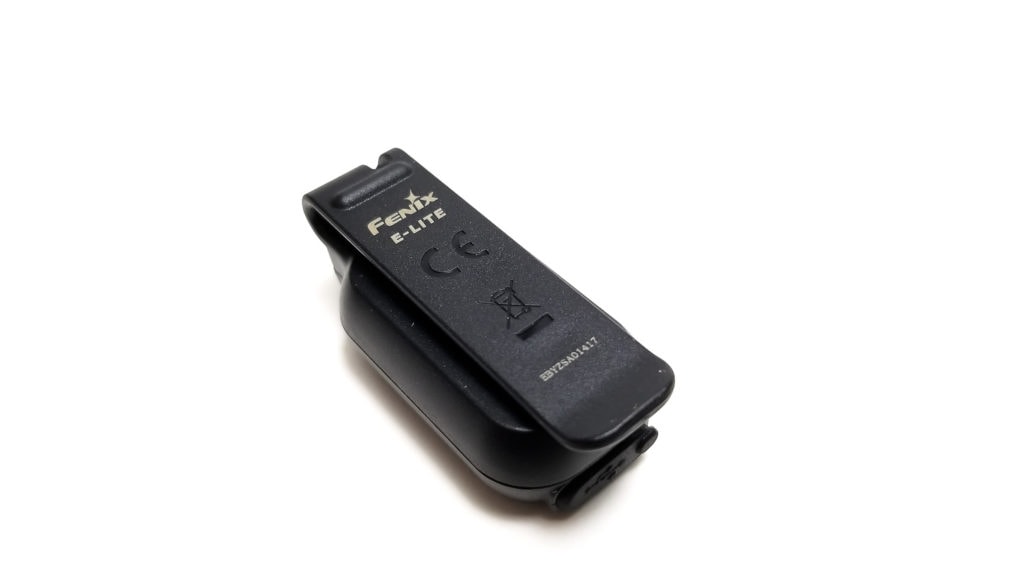
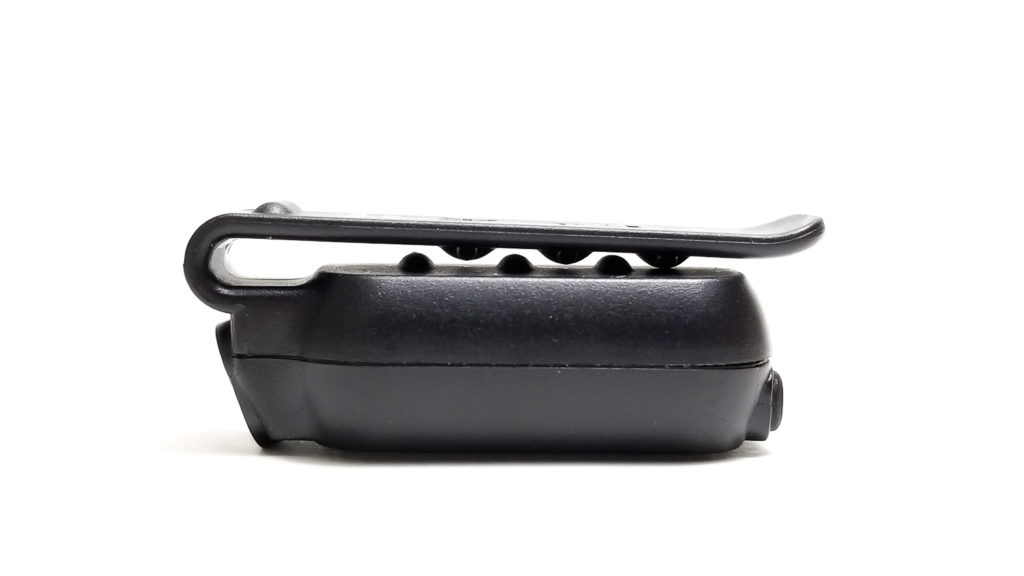
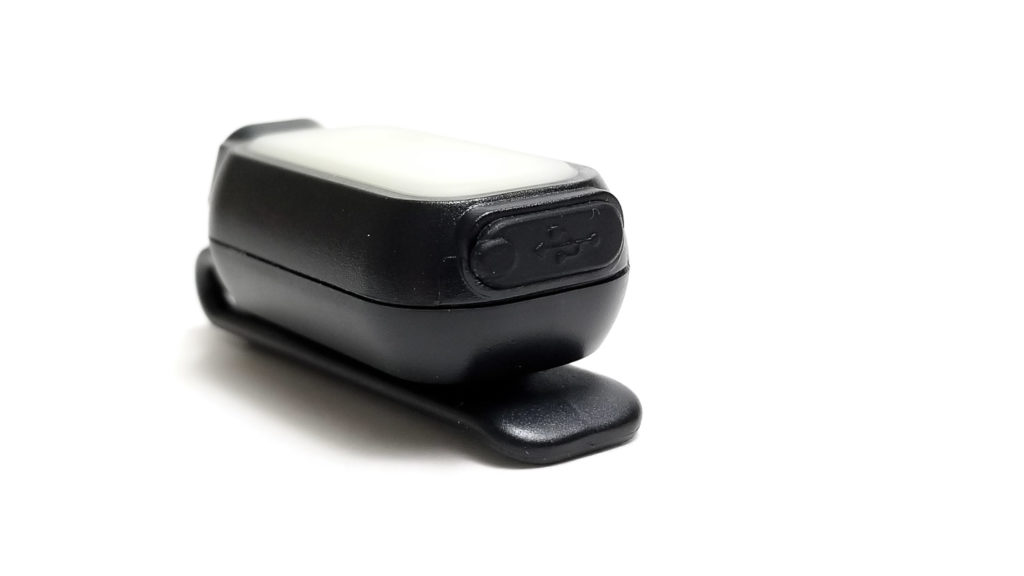
LED, Lens, Bezel, and Reflector
Although it’s not a big deal for most buyers, the enthusiast in me gives Fenix a round of applause for being forthright about the LEDs they put in their lights. Thanks Fenix! The E-Lite employs 3 different LEDs: a main white LED up front, with a red and blue LED under the rubber top cover.
The main white LED is identified as the Match CA18-3X2 in cool white, which Fenix also uses in the E12 V2.0 and E03R. This somewhat obscure LED is made by a company called Genesis Photonics. Their literature identifies it as a CSP-type (no exposed bonding wires) slightly smaller than a Luminus SST20 at 1.8 x 1.8 x 0.92 mm, and rated for 5000-8000K at 70 CRI. The red and blue LEDs are 2835 size (2.8 x 3.5 mm) SMD emitters made by a Taiwanese company called Everlight.
The white LED sits under a small rectangular frosted TIR optical lens measuring 11 x 9 mm. There’s no protective lens or bezel. The first time I fired the E-Lite up, I was surprised by the beam from that little LED. The optic produces a good amount of throw and very useful spill. I was pretty impressed overall with it considering how small it is, almost brighter than it should be! The color is cool white. I rate it about the same as a 6000K XP-L.


Dimensions and size comparison
- Length: 5.2 cm / 2.05 inches
- Body width: 2.3 cm / 0.91 inches
- Body height: 2.0 cm / 0.79 inches
Weight:
- 17.3 grams / 0.61 oz.
Small Flashlights compared
E-Lite compared to other small lights and some batteries: (left to right): Skilhunt E2A, AAA battery, Fenix E-Lite, AA battery, Sofirn SP10S. Compared to my (well-worn) Streamlite Keymate.
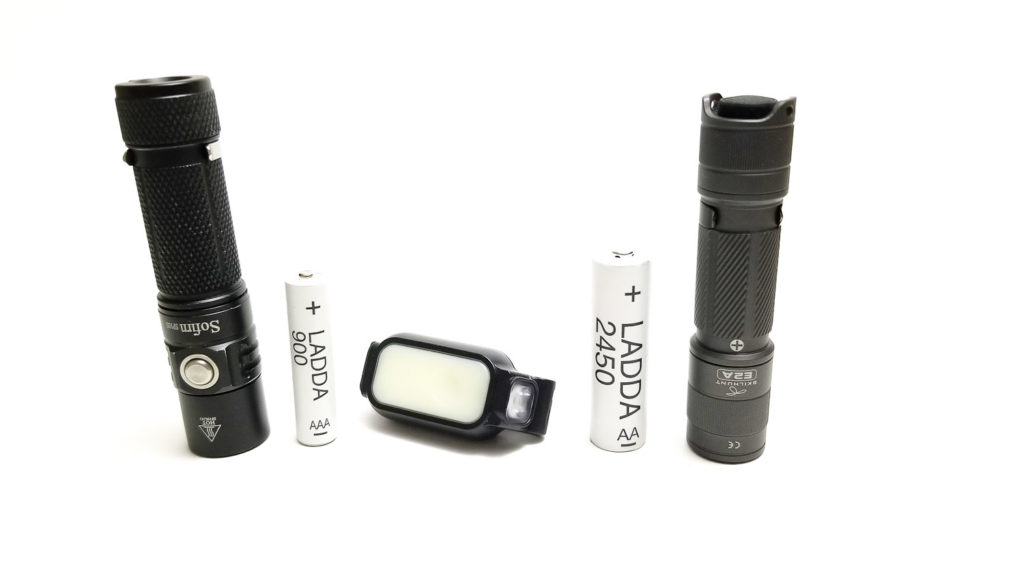
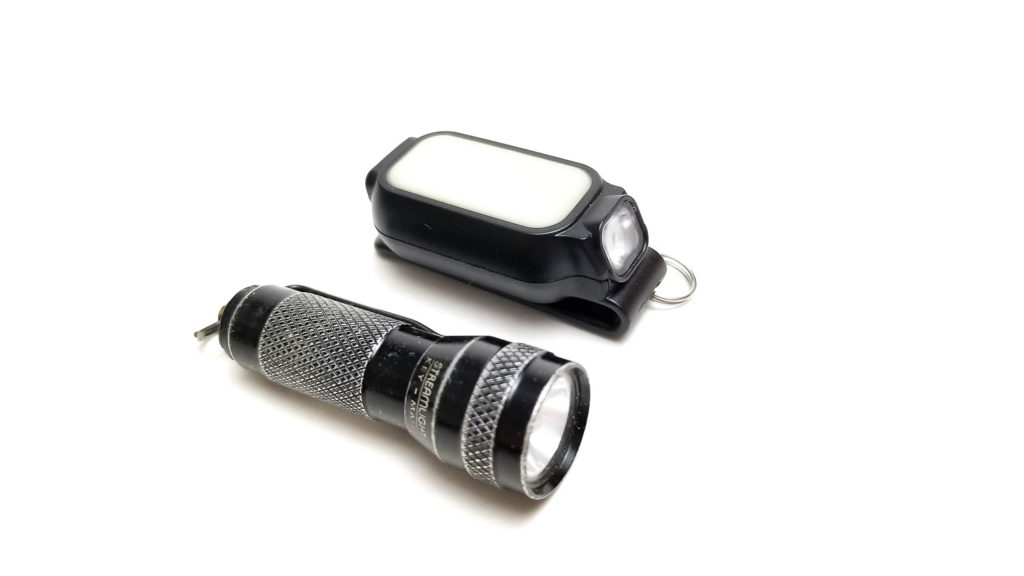
Driver & User Interface:
The UI is simple (and it should be) for a small flashlight. There’s 3 modes for the white LED and 2 modes for the blue and red LEDs. I’m glad Fenix went the simple route with this since complicated, difficult to navigate UIs on keychain lights seems out of place. They should turn on when you press the button.
Modes: (main white LED): low, medium, high. Red/blue LEDs: constant on and beacon-flasher mode. The color LEDs flash at about 1.5 Hz.
From OFF:
- Press and hold 0.5 seconds: Turns on main white LED
- Single-click: Switches through the 3 white LED modes: L-M-H
- Double-click: Lockout
From ON:
- Press and hold 1.2 seconds: Switches to red/blue light modes
- Press and hold 0.5 seconds: Turn off
- Single-click: Cycles through red/blue continuous and flashing modes: Red-red flash-blue-blue flash
- Double-click: N/A
Mode memory:
- None
Low voltage warning:
- Yes, when in operation, the light steps down brightness and the battery indicator will flash red until the light switches off.
Strobe/blinkies
- Red/blue flashing modes only
Lock-out mode:
- From off, double click for electronic lockout. Repeat to unlock
PWM
- None
Additional info: I think keychain lights are supposed to be simple lighting devices so I’m glad Fenix kept it simple. I’m not a fan of press and hold to turn on, but the E-Lite UI is easy to learn and use, and I think switching the modes between the three light colors is intuitive. Most users will predominantly be using the white mode the most, they put that first, followed by red mode (for bike flasher and low-impact night illumination), and then blue for signaling or a beacon. The mode spacing for the main light is really good, and although the low is pretty low, it could be a tad lower since it’s not a sub-lumen output for really low-light work. They did incorporate a battery level check by single-clicking the button when off. Solid green is full charge, flashing green is 80-50%, solid red is 50-20%, and flashing red is 20% and lower.
Batteries & Charging
The E-Lite features an internal 275 mAh lithium polymer battery that is unfortunately not user-serviceable. That means when the battery goes, the light goes with it to the recyclers. This could be a positive or negative, but for me, I’d prefer to be able to at least swap the battery rather than bin the thing. Oh well.
It’s really nice to see on-board charging. Even better, they went with USB type C. Type C has a much more robust and non-directional connector that gives more reliable connections. It’s good to see more and more flashlight manufacturers using this connector and moving away from micro USB.
Fenix doesn’t list the charging current, but on my Hidance USB tester I got a solid 0.26 A after a runtime test. This means the battery will be charged in about an hour ( Fenix specifies 1 hr. 30 min). There’s a small green and red indicator light forward of the switch that glows red when charging and turns green when charged. Fenix, can we please, please, please get blue charge indicator lights?
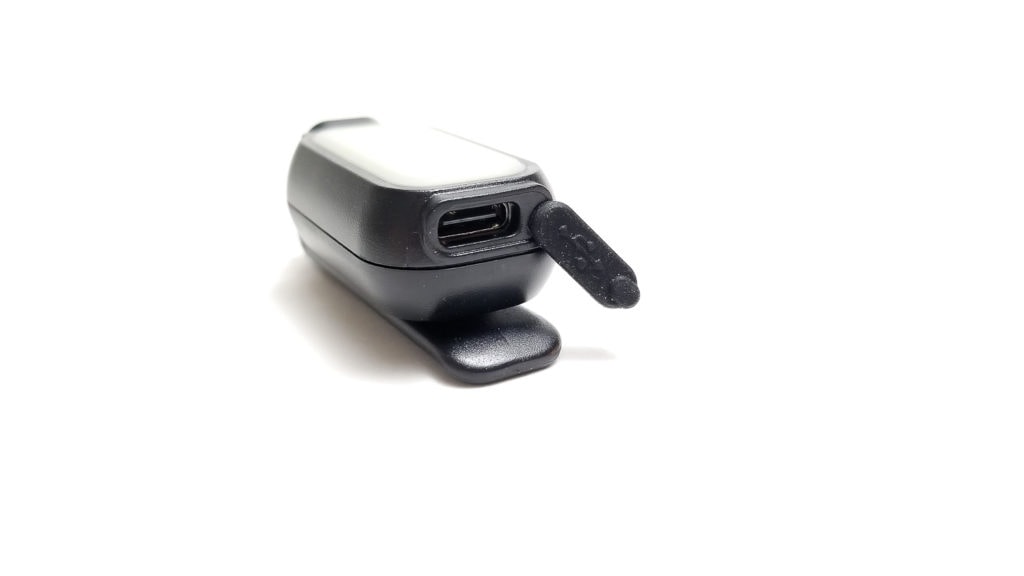
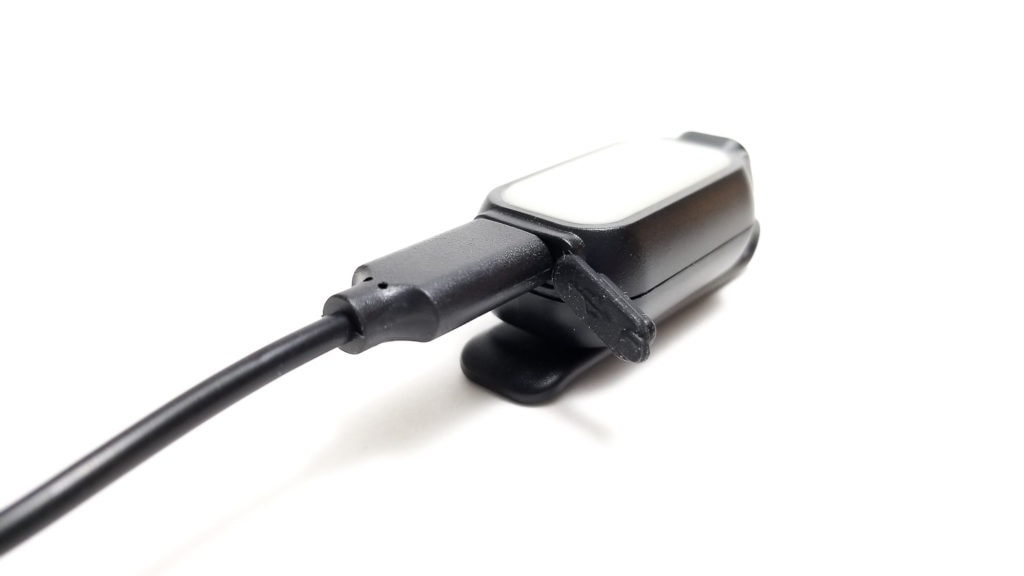
Performance
I was pretty excited to do the performance testing, even though it’s just a keychain light.
Amp measurement
Since the E-Lite is sealed with an internal battery I could not measure the current or parasitic drain.
Runtime graph
I conducted the runtime test using the 30 centimeter integrating sphere with the Digi-Sense 20250-00 data logging lux meter and tested all modes for the white LED, and the red mode. I did not test the beacon modes.
I observed some interesting behavior from the E-Lite during the lumen testing that I was anxious to see translated to a graphical representation. When running the high mode with the white LED, the lumens started low and increased for the first 30 seconds before leveling off and then stepping down. I do not know why this happened since usually when an LED heats up, the output drops as the current decreases.
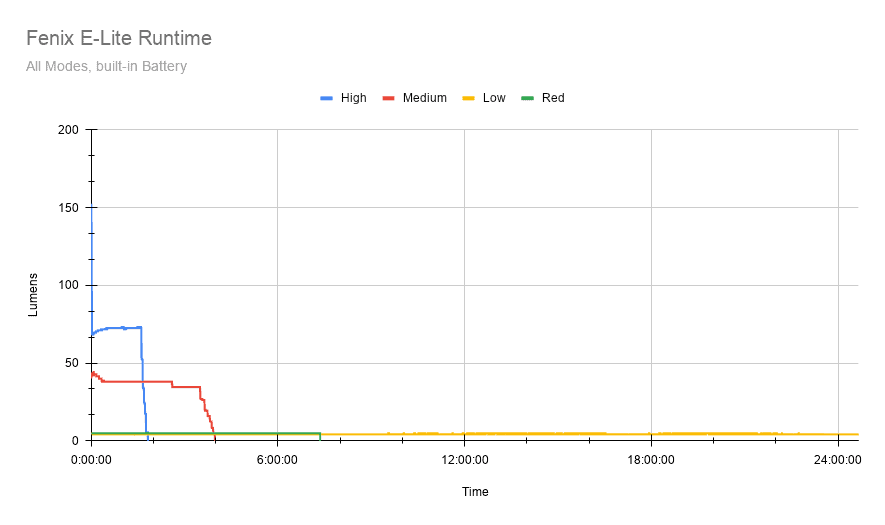
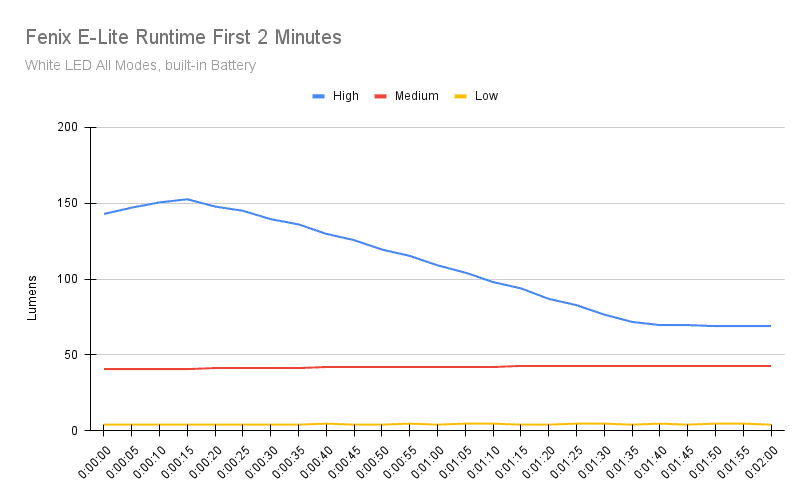
Either way, it made for an interesting graph. High started at 142.8 lumens and slowly increased to a peak of 152.49 lumens at 15 seconds, then dropping back down to a hair under 140 lumens at 30 seconds. The output consistently decreased over the next 1 minute 15 seconds to 69 lumens where it stayed until increasing to 72 lumens by the 35 minute mark. It stayed between 72 and 73 lumens until the 1 hour 36 minute mark when the output started dropping again over the next 13 minutes. The light turned off at the 1 hour 49 minute mark. Fenix specifies 1 hour 40 minutes for high, which is pretty consistent with my test.
For medium, the output was much more consistent and linear, but the odd increase in brightness I saw with high was also evident here. The test started at 40.7 lumens, gradually increasing to 44.16 lumens over the span of about 5 minutes, then decreasing a few lumens at a time over the duration of the test. There weren’t really any major step-downs here, just gradual decreases until it leveled off at a little under 5 lumens until the light shut off at the 3 hour 58 minute mark. This was down a little from Fenix’s specified 4 hours 20 minutes runtime, but pretty close.
Low was uneventful. The test started at 4.14 lumens and ended 24 hours 39 minutes later at, you guessed it, a little over 4 lumens. Not nearly as exciting as high or medium mode, but consistent brightness throughout the runtime.
I tested the red mode runtime and, well, it was pretty boring and uneventful. It started at 4.83 lumens and ran without stepping down until the last second of the 7 hour 21 minute runtime at 4.14 lumens. This is not far off from Fenix’s spec of 8 hours. The end brightness is the exact same as the low runtime.
Takeaways? The increasing brightness on high and medium were not observed in low mode or in the red mode tests. I am not sure why it’s doing that, so perhaps Fenix built it into the driver firmware to help with heat dissipation in the plastic host? Speaking of heat, the light didn’t heat up much. From the ambient of 23 C, the highest I saw was 34 C in high mode. I don’t doubt it could be driven harder for more brightness since LEDs can take 100 C easily, but again, it’s a small, lightweight plastic host without much (if any) heatsinking abilities.
For real-world use, this is good performance from the diminutive E-Lite. Remember, it’s a little 275 mAh battery in there, which is many times more than lithium or alkaline button cells found in a lot of keychain lights, and more than a 10180 size cell. The high runtime was pretty good for a tiny light. Medium and low modes were also good, and I liked the steady output and LVP notifier. The light was also still usable after all tests, with what seems like plenty of battery life. I estimate the LVP cut off is pretty conservative for this light.
Lumen measurements (for each mode)
For the lumen tests, I used my home made 30 cm integrating sphere calibrated with a light of known output using the Digi-Sense 20250-00 data logging lux meter.
| Mode | Measured Lumens | Advertised Lumens |
| Low | 5.5 | 5 |
| Medium | 42.78 | 40 |
| High | 151.8 | 150 |
| Red | 4.83 | 3 |
| Blue | 4.14 | 3 |
The lumen measurements were interesting. The runtime testing gives a better illustration of this, but the readings for the white LED would gradually increase over the span of 20 seconds before leveling off at around 25 seconds. It was quite random and unpredictable, but generally, a +2% variance between the start and 25-30 seconds over the 3 white LED modes. Anomalies aside, my readings are close to advertised, so that’s always nice to see! I’m pretty impressed with the little white LED behind that optic! It’s surprising how bright this thing is.
Throw numbers:
Keychain lights are not designed for throw, but it’s nice to see some throw capabilities from the E-Lite. I measured the main white LED at 5 meters indoors using the Uni-t UT383S lux meter. Fenix doesn’t list candela values for the red and blue, just distance, and I couldn’t get any readings at 5 meters or 1 meter with the Uni-T, so I switched to the Digi-Sense, which is much more sensitive and has a manual range for lux. I measured at 2 meters (figures in parentheses).
| Mode | Measured Throw | Advertised Throw |
| Low | (20.4 cd, 9.03 m) | 20 cd, 9 meters |
| Medium | 150 cd, 24.49 m | 121 cd, 22 meters |
| High | 675 cd, 51.9 m | 410 cd,42 meters |
| Red | (3.2 cd, 3.57 m) | 7 m |
| Blue | (3.2 cd, 3.57 m) | 7 m |
This is surprisingly good performance and more than useful enough for keychain flashlight tasks. I don’t know if it’s good enough for ECD though.
Beamshots
- The wall with the map is about 5 meters away. I tested modes low, medium, and high. Low is pretty low and I had to run a pretty low shutter speed and bump the ISO to get it to show up.
- I tested the E-Lite against the Skilhunt E2A with a Nimh battery to keep it fair. Both lights have TIR optics and small LEDs (E2A has an SST20). The end of the hallway is about 8 meters away. I tested high on the E2A and the E-Lite. Although the E2A is a little brighter, the high CRI and 4000K color seem about the same brightness as the E-Lite.
- The red and blue modes are about 4 meters from the wall and not very bright.
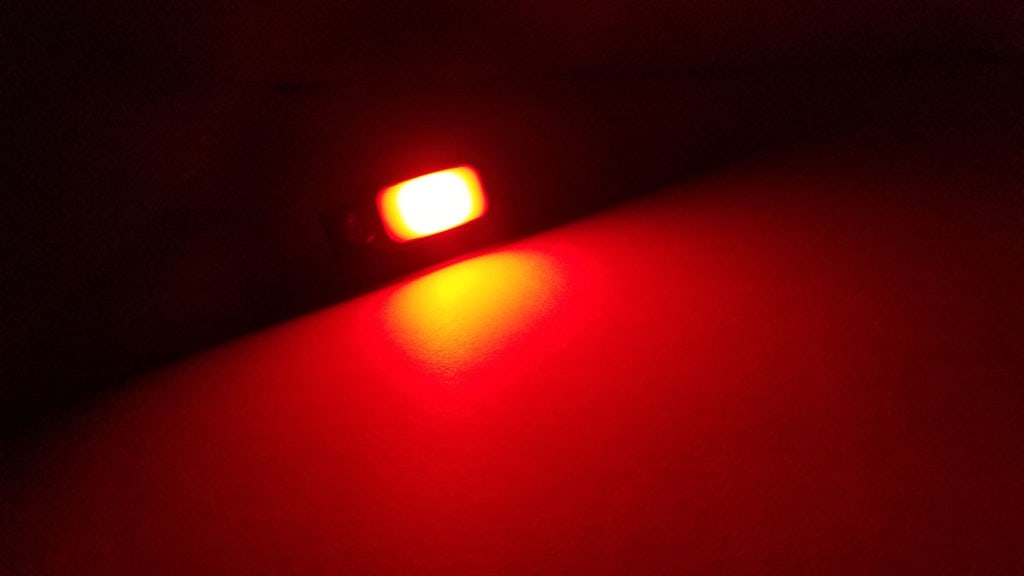
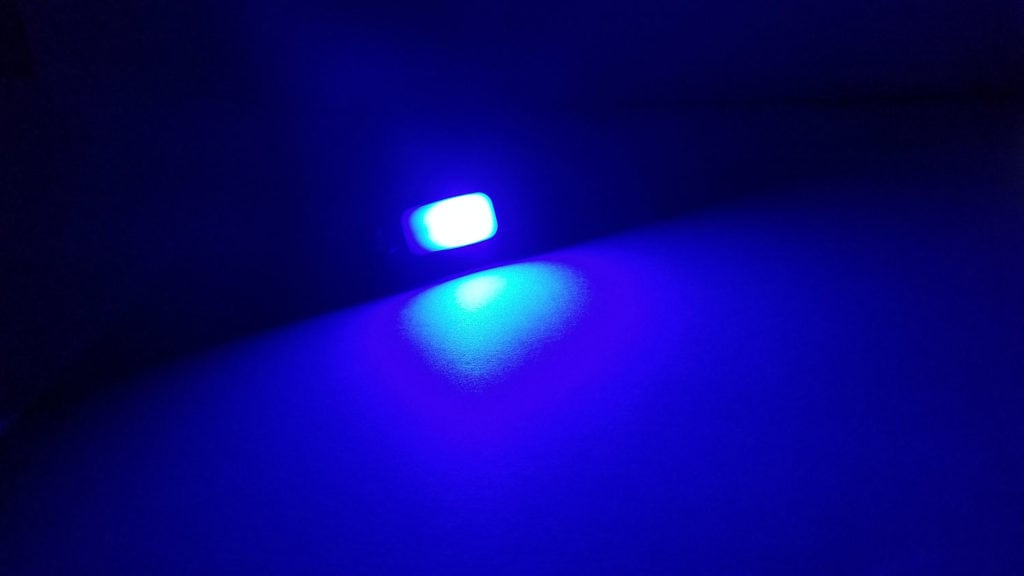
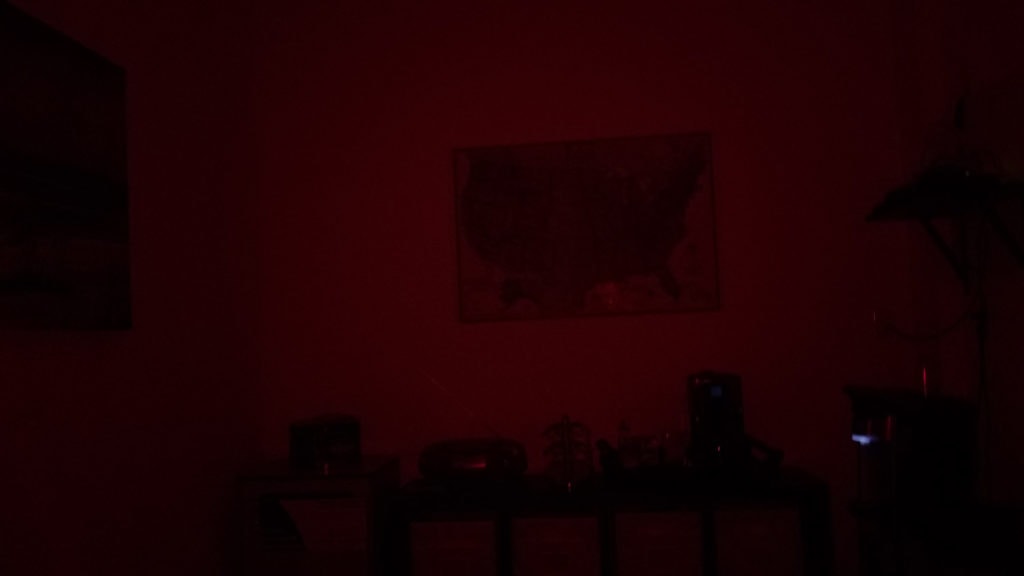
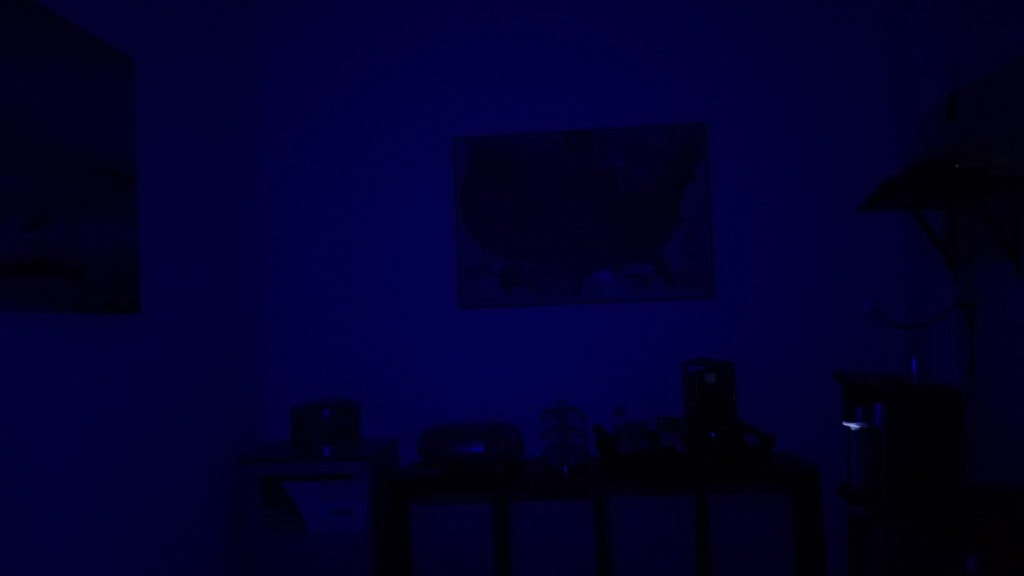
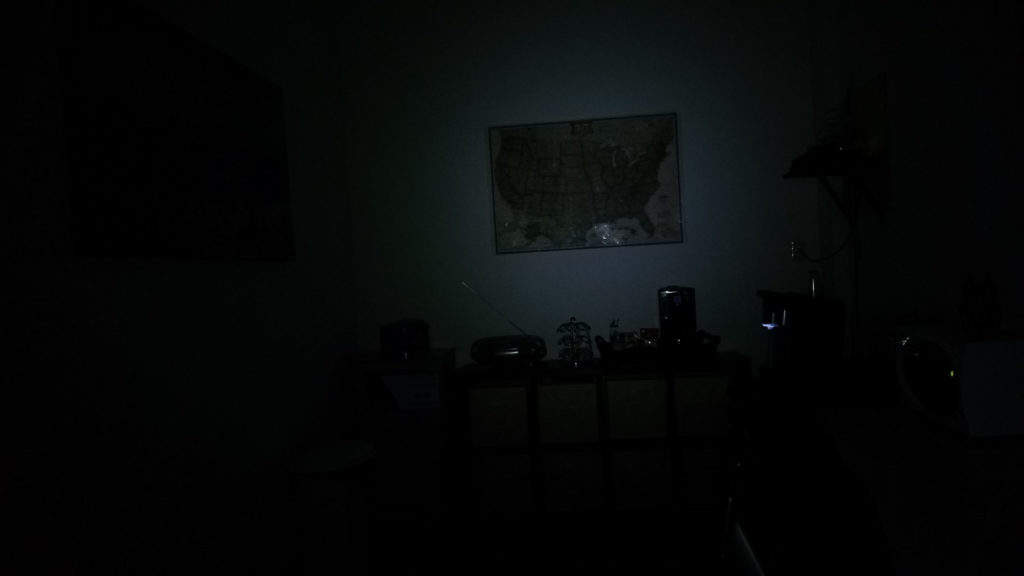
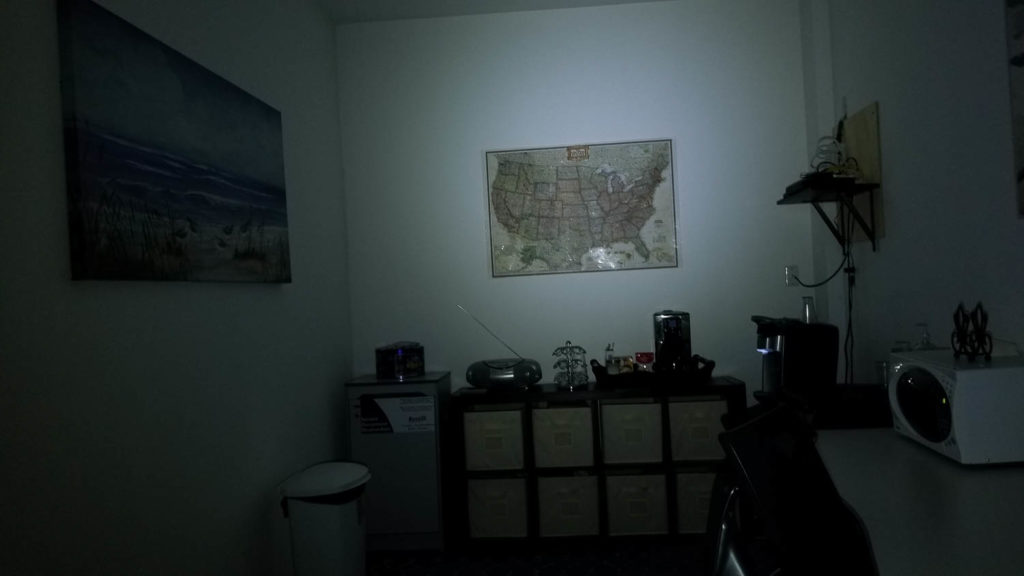
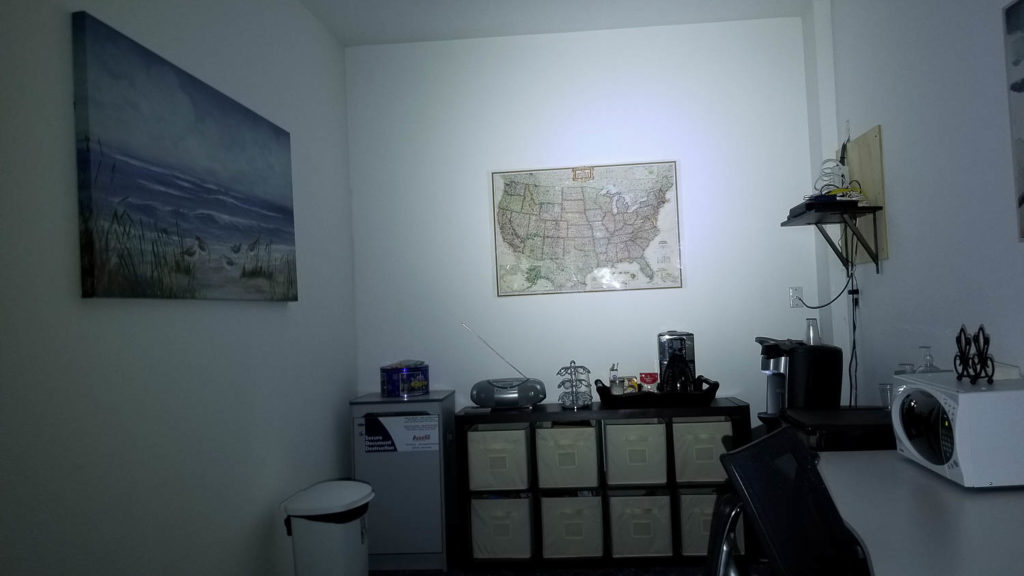
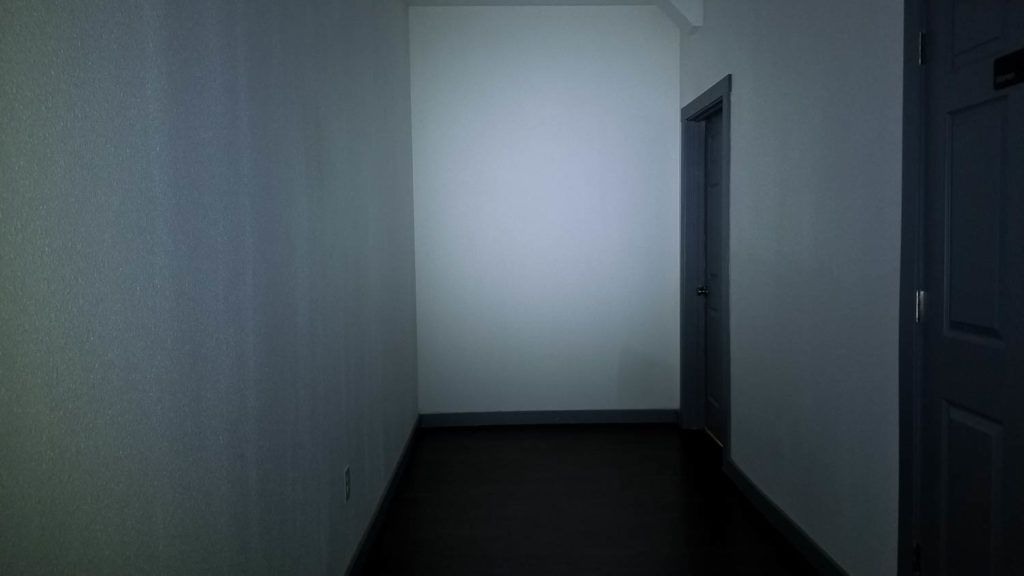
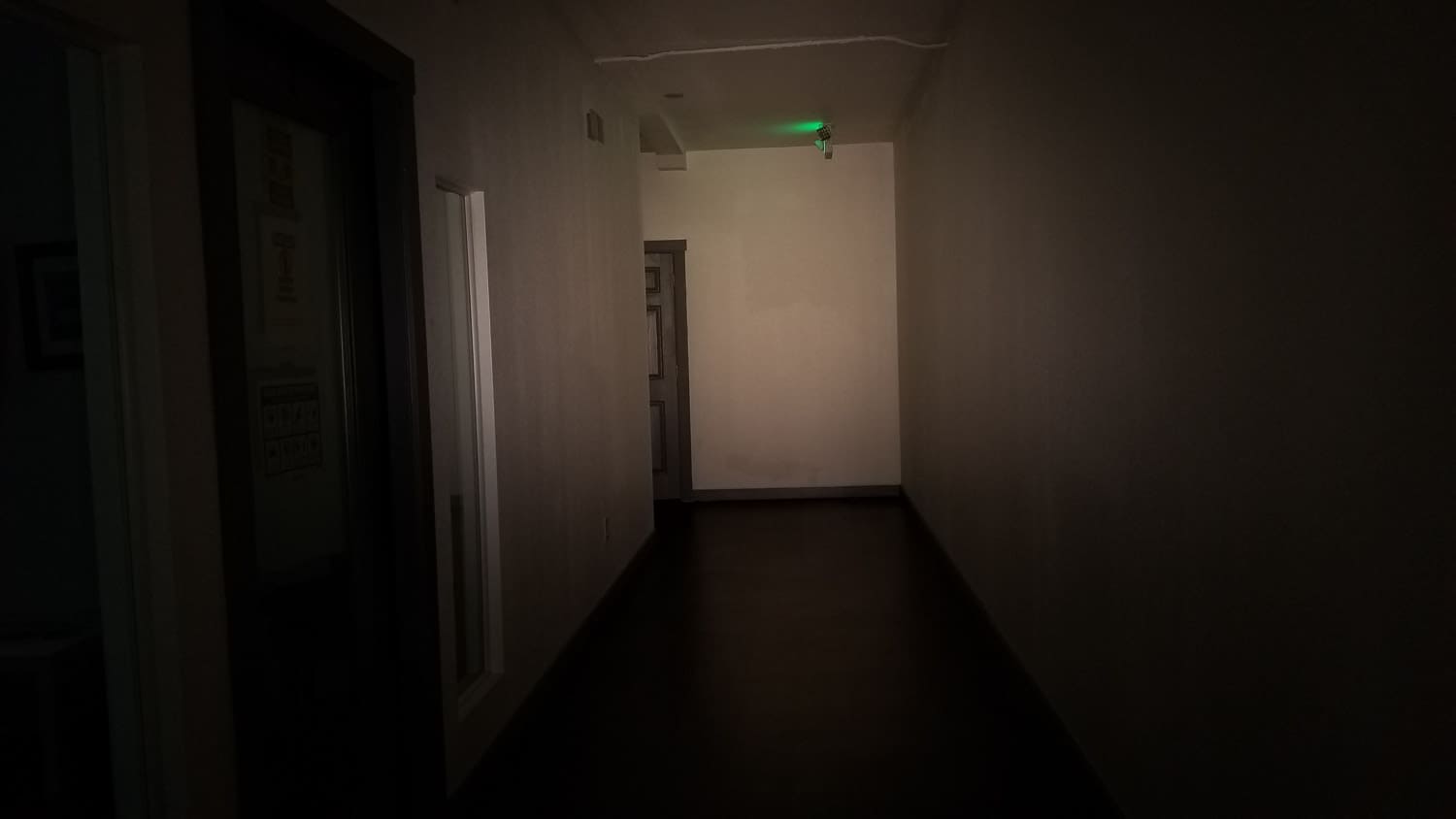
Disclaimer: This flashlight was sent to me for review at no cost by Fenix lighting. I have not been paid to review, nor have I been holding back on problems or defects.
Explanation on star ratings:
- – Avoid: my phone flashlight would be a better choice
- – Poor: significant defect or issues, much better options available at the same price
- – Average: some defects or issues
- – Good: recommended (minor issues)
- – Great: highly recommended
Final Verdict
Pros
- Lightweight
- Solid build quality
- Simple, well thought out UI
- Great warranty
- Pretty bright
- Throws good
- Nice beam
- Decent runtime
Cons
- Keyring hole in weird spot
- Not a fan of press and hold for on
- Non-replaceable battery

4.5 stars: ★★★★⋆
Okay, we’ve heard the saying that if it looks like a duck and quacks like a duck, it must be a duck, right? Well, I think that correlates to keychain flashlights, but they are definitely not all ducks, especially in the case of the Fenix E-Lite. I appreciate a well-designed and engineered light, and the folks at Fenix have produced a durable, high quality tiny flashlight that goes on a keyring. Don’t want it on your keyring?
Toss it in your glove box, junk drawer, tool box, or clip it to a hat, pocket, bicycle, motorcycle, you name it. I like the simple UI and how it incorporates the multicolor LEDs. It’s also feature-rich with USB type C charging as a bonus. The battery life is decent, the beam is surprisingly nice, and performs great as a keychain or emergency light. Is this an EDC?
That’s debatable. While 150+ lumens is good for a keychain-size light, in my opinion it’s borderline for EDC work. I couldn’t really find anything egregious with the E-Lite, other than the keyring hole being in an odd spot, I don’t like the press and hold to turn it on, and it’s a bummer that you recycle it after the battery goes kaput. Lastly, although I appreciate manufacturers getting creative with flashlight designs, I must say that I think it looks, well, a little odd. If the E-Lite were a duck, it would be one of those Muscovy ducks, but I digress. Looks aside, I’m really liking the E-Lite, and will be put to very good use. 4.5 stars for this one.
Fenix E-Lite for sale
Get 10% off every purchase at Fenix Lighting US, by using our exclusive 1lumen discount code: 1lumen10
1lumen selects and reviews products personally. We may earn affiliate commissions through our links, which help support our testing.